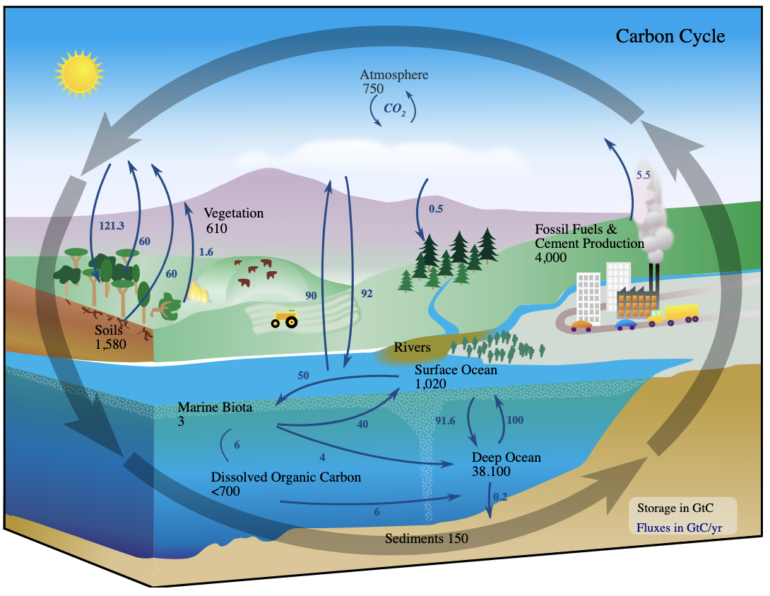Communities of microbes that work together release more carbon dioxide than competitive communities, contributing more to climate change.
Despite being small, microbes, and especially bacteria, contribute a lot to the global carbon cycle—the movement of carbon in various forms through nature. Its level in the atmosphere, and so its influence on climate change, is controlled by a series of sources and sinks, such as respiration and photosynthesis respectively.
Now, new research from Imperial College London and University of Exeter scientists has shown that, when warmed, bacterial communities that have matured to cooperate release more carbon dioxide (CO2) than communities that are in competition with each other.
The results are published in Nature Microbiology.
Co-author Dr. Tom Clegg, who led the theory development from the Department of Life Sciences (Silwood Park) at Imperial, said, “Our findings have far-reaching implications given the significant contributions that bacterial communities make to the carbon cycle. We show that changes in bacterial species interactions can rapidly and substantially increase the carbon emissions from natural ecosystems worldwide.”
Bacteria—like humans—respire, taking in oxygen and releasing CO2. Of the many factors that control their level of respiration, temperature is particularly important.
Bacteria form communities of different species in all habitable environments, including in soil, puddles, and in our guts. When communities first form, the bacterial species are often “competitive,” each trying to get the best resources.
However, over time these communities mature to cooperate by facilitating each other’s resource use. In this scenario, each species plays a role in the community that ensures its overall “health,” for example several species working together to decompose leaf litter to access the nutrients.
Previously, researchers had assumed that the response of bacterial communities to rising temperatures was mainly governed by individual species’ metabolism changes: as the environment warms, individual cells have to respire faster to survive. However, as these species interact, the team behind the new paper wanted to test if the level of cooperation in the community changed this picture.
They built a mathematical model that showed cooperative communities are more sensitive to warming, meaning that as temperatures rise, they release CO2 at an accelerated rate. The team tested their model in lab experiments with communities from geothermal streams in Iceland, which showed that a shift from competition to facilitation caused a 60% increase in the sensitivity of community respiration to warming.
Dr. Francisca García from the Environment and Sustainability Institute at the University of Exeter (Penryn) said, “Researchers should incorporate this phenomenon in models as it has the potential to substantially improve the accuracy of predictions about the effects of ongoing and future climate change on the global carbon cycle.”
“Indeed, new bacterial communities are assembling on melting glaciers and permafrost driven by climate change as we speak, and as they become more cooperative, this will likely amplify the carbon emissions from these rapidly changing environments.”
More information:
Francisca C. García et al, The temperature dependence of microbial community respiration is amplified by changes in species interactions, Nature Microbiology (2023). DOI: 10.1038/s41564-022-01283-w
Provided by
Imperial College London
Citation:
Microbes that cooperate contribute more carbon emissions, finds study (2023, February 13)



